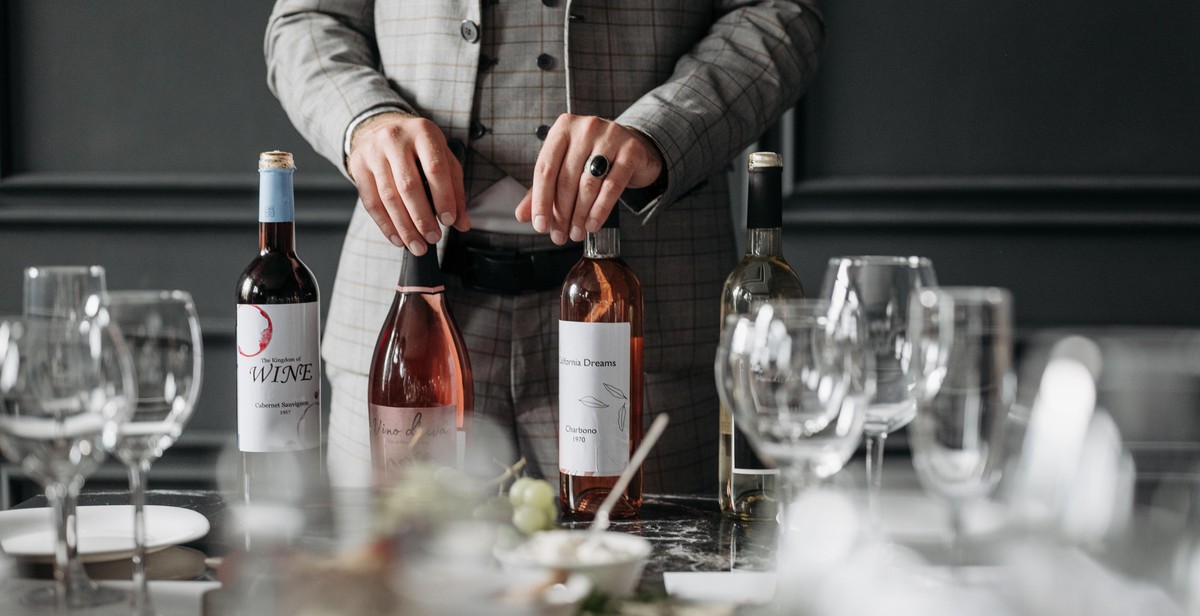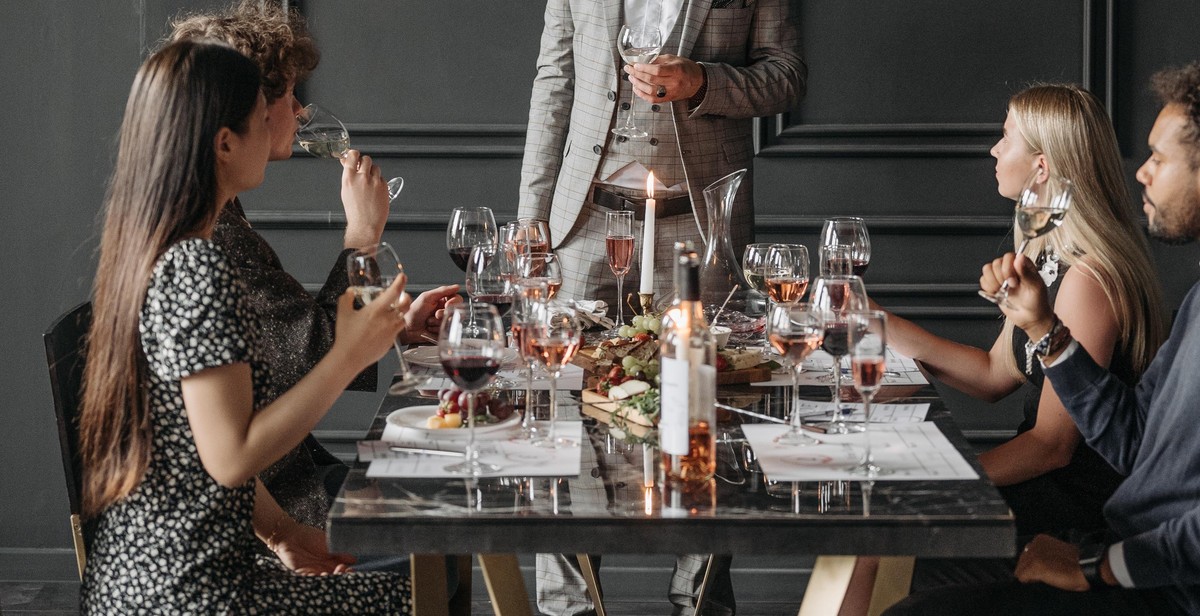How to Taste and Evaluate Wine: Developing Your Palate and Appreciation
Wine is one of the most complex and fascinating beverages in the world. It has been enjoyed for centuries and is an essential part of many cultures and traditions. Tasting and evaluating wine is an art that requires practice, patience, and a developed palate.
Why Taste and Evaluate Wine?
Tasting and evaluating wine is not just about drinking it; it’s about appreciating the wine’s unique characteristics, understanding its origins, and learning about the winemaking process. It’s also a way to discover new wines, expand your palate, and enhance your overall wine experience. Whether you’re a beginner or an experienced wine enthusiast, tasting and evaluating wine can help you:
- Develop your palate and sensory skills
- Identify different grape varieties and wine styles
- Understand the impact of climate, soil, and winemaking techniques on a wine’s flavor and aroma
- Pair wine with food more effectively
- Appreciate the nuances and complexities of different wines
In this article, we’ll show you how to taste and evaluate wine like a pro, so you can get the most out of your wine-drinking experiences and develop a deeper appreciation for this wonderful beverage.

The Tasting Process
Learning how to taste and evaluate wine can be a fun and rewarding experience. The tasting process involves three main steps: Look, Smell, and Taste. By following these steps, you can develop your palate and appreciation for wine.
Step 1: Look
The first step in the tasting process is to look at the wine. Hold the glass up to the light and observe its color and clarity. The color of the wine can give you an indication of its age and grape variety. For example, a young red wine will have a deep purple color, while an older red wine will have a more brick-red hue. A white wine can range from pale straw to golden yellow, with a greenish tint for younger wines. The clarity of the wine can also indicate its quality. A wine that is clear and bright is usually of higher quality than one that is cloudy or hazy.
Step 2: Smell
The second step in the tasting process is to smell the wine. Swirl the wine in the glass to release its aromas, then take a deep sniff. The aroma of the wine can give you an indication of its flavor profile and age. For example, a young red wine may have fruity aromas such as cherry or blackberry, while an older red wine may have more complex aromas such as leather or tobacco. A white wine may have aromas of citrus or tropical fruits for younger wines, while older white wines may have aromas of honey or nuts.
Step 3: Taste
The final step in the tasting process is to taste the wine. Take a small sip and let it sit on your tongue for a few seconds before swallowing. The taste of the wine can give you an indication of its flavor profile and quality. For example, a red wine may have flavors of blackberry or plum, with a hint of oak or spice. A white wine may have flavors of apple or pear, with a hint of acidity or sweetness. The finish of the wine, or the aftertaste, can also indicate its quality. A wine with a long, pleasant finish is usually of higher quality than one with a short, unpleasant finish.
By following these three steps, you can develop your palate and appreciation for wine. Remember to take your time and savor each sip, and don’t be afraid to experiment with different wines and flavor profiles.

Wine Tasting Techniques
Wine tasting is a sensory experience that allows you to evaluate the flavors, aromas, and textures of different wines. There are several techniques that can help you get the most out of your wine tasting experience.
Swirling
Before tasting a wine, it’s important to swirl it in the glass. This helps to release the wine’s aromas, which are essential to experiencing its full flavor. To swirl, hold the base of the glass and gently move it in a circular motion. Try to create a small vortex in the center of the glass to maximize the wine’s exposure to air.
Spitting
Professional wine tasters often spit out the wine after tasting it. This might seem strange, but it’s a necessary step to avoid getting drunk during a tasting. Additionally, spitting allows you to evaluate the wine’s flavors without the interference of alcohol. To spit, simply hold your mouth slightly open and aim for a spittoon or bucket.
Taking Notes
During a wine tasting, it’s important to take notes on each wine you try. This can help you remember which wines you enjoyed and why. When taking notes, consider the wine’s appearance, aroma, flavor, and texture. You might also want to note the wine’s vintage, producer, and region. This information can be helpful when purchasing wine in the future.
| Appearance | Aroma | Flavor | Texture |
|---|---|---|---|
| Color | Fruitiness | Acidity | Body |
| Clarity | Spiciness | Sweetness | Tannins |
| Viscosity | Earthiness | Bitterness | Finish |
By using these techniques, you can develop your palate and appreciation for wine. Remember to take your time and savor each sip. With practice, you’ll be able to identify different flavors and aromas, and confidently choose wines that suit your taste.

Developing Your Palate
Developing your palate is essential to becoming a wine connoisseur. It takes time and practice to train your taste buds to recognize the different flavors and aromas found in wine. Here are some tips to help you develop your palate:
Tasting Different Wines
One of the best ways to develop your palate is to taste different wines. Try to taste as many different varieties of wine as possible, including reds, whites, and rosés. Sample wines from different regions and countries, as well as wines made from different grape varieties. Take notes on the flavors and aromas you detect in each wine and compare them to others. This will help you develop a reference point for identifying different wine characteristics.
Pairing Wine with Food
Pairing wine with food is another great way to develop your palate. The right wine can enhance the flavors of your meal, while the wrong wine can overpower the food. Experiment with different wine and food pairings to find the perfect match. There are many resources available online that can help you pair wine with food, including pairing charts and guides.
Joining a Tasting Group
Joining a tasting group is a fun and educational way to develop your palate. Tasting groups are typically made up of wine enthusiasts who gather to taste and evaluate different wines. Members of the group share their opinions and insights on the wines, which can help you develop your own palate. Tasting groups can also be a great way to learn about new wines and regions, as members often bring bottles from their own collections to share.
By following these tips, you can develop your palate and become a wine connoisseur. Remember that developing your palate takes time and practice, so be patient and enjoy the journey!

Wine Appreciation
Wine appreciation is a crucial aspect of wine tasting and evaluation. To fully appreciate wine, you need to have a basic understanding of wine labels, winemaking, and wine regions.
Understanding Wine Labels
Wine labels provide essential information about the wine, including the grape variety, vintage, region, and producer. Understanding these labels can help you make informed decisions when selecting wine. For instance, the grape variety can give you an idea of the wine’s flavor profile, while the region can tell you about the style of wine produced in that area.
Learning About Winemaking
Winemaking is a complex process that involves several stages, including harvesting, crushing, fermentation, and aging. Each stage can have a significant impact on the final product’s taste and aroma. Learning about winemaking can help you appreciate the effort and skill that goes into producing a bottle of wine.
Exploring Wine Regions
Wine regions are areas that produce wine with unique characteristics due to their climate, soil, and topography. Exploring different wine regions can help you understand how these factors influence wine production. You can also discover new wines and styles that you may not have tried before.
| Region | Country | Notable Grapes |
|---|---|---|
| Bordeaux | France | Cabernet Sauvignon, Merlot |
| Napa Valley | USA | Cabernet Sauvignon, Chardonnay |
| Tuscany | Italy | Sangiovese |
| Barossa Valley | Australia | Shiraz |
Overall, wine appreciation is about discovering new wines, understanding their origins, and developing your palate to appreciate the unique flavors and aromas of each bottle.
